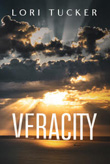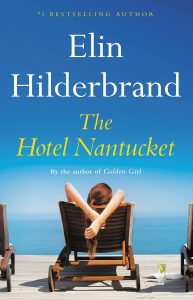
Veracity was written by Lori Tucker and Mark Graham Communications.
You’ve seen it. You’ve likely done it.
People of all ages whom we observe out and about—on the bus, at the gym, walking dogs—are often tuned into something. Wireless headsets and earbuds have become commonplace accessories, and while plenty of listeners are being entertained by music or podcasts, a growing number have an audiobook cued up on their device. Factor in commuters in their cars and at-home listeners, and it adds up to a lot of readers who enjoy consuming a book with their ears rather than their eyes.
The numbers back this up. According to market research retailer Research and Markets, “The United States audiobooks market reached approximately USD 2.92 Billion in 2024 [and is] estimated to reach a value of around USD 7.64 Billion by 2034.” And the Audio Publishers Association 2025 Consumer Survey found that “…51% of Americans aged 18 and older, an estimated 134 million people, have listened to an audiobook. There is a notable increase in interest among non-listeners: 38% say they are interested in audiobooks, up from 32% last year, with the number of those very interested nearly doubling from 10% to 18%.”
If you’re an author—or hope to become one soon—it’s wise to consider creating an audiobook version of your book to complement your print and ebook offerings. This is true regardless of genre, as audiobooks are equally popular across most genres. While there are numerous advantages to offering an audiobook, there are several key factors to consider:
- Production. If you’re indie (self) publishing your book, you will likely also need to self-produce the audiobook. This doesn’t mean you have to do it all yourself—in fact, the vast majority of authors hire professionals to work with during this process.
- Narration. Some authors narrate their own books, but considerable time needs to be spent in the studio, often involving multiple takes, and the experience can be grueling for nonprofessional narrators. Additionally, while some listeners enjoy hearing an author read their own book, this is only true if the narration is excellent and the recording is high quality.
- Artificial Intelligence. Some audiobook production companies offer non-human, AI-generated voices for a lower cost than a professional human narrator. Whether or not to use an AI narrator is a personal and ethical choice that individual authors must make for themselves.
- Cost. The average professional human narrator costs $200 – $400 per finished hour (about 9,000 words of content). Other production costs might be included, or they could be billed separately. Depending on your budget and needs, you might want to wait until your print and ebook versions are turning a profit before investing in audiobook production. On the other hand, if you feel that interest in an audiobook version of your book will be sizable, it could be a good idea to invest in audio to be released at or around the same time as your print and ebook come out.
- Distribution. You can distribute the audiobook on popular online platforms such as Apple and Amazon, as well as through independent audiobook retailers such as Libro.fm. Services such as ACX (Audiobook Creation Exchange, owned by Amazon/Audible) and INaudio (formerly Findaway) allow you to upload your book’s MP3 audiobook file for distribution to retailers and libraries.
The audiobook market promises continued growth, and it’s important to consider this key path for reaching more readers. If you’ve drafted a book and need help getting it to the finish line—or you simply have a great idea for book but aren’t sure how to get started—please contact us. With Mark Graham Communications’ experienced ghostwriters, editors, and book production and marketing experts on your team, your book can soon be in the hands—or ears—of readers who are eager for your story.









